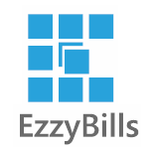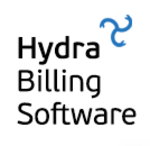Description

EzzyBills

Trexle
Comprehensive Overview: EzzyBills vs Trexle
EzzyBills Overview
a) Primary Functions and Target Markets:
EzzyBills primarily functions as an automated data entry and invoice processing tool that caters to small-to-medium-sized businesses. It focuses on translating scanned invoices, bills, and receipts into a digital, organized format that can be easily integrated into accounting software. EzzyBills streamlines the accounts payable process, reduces human error, and increases efficiency in financial operations. Its target market includes businesses looking to reduce administrative overhead and improve accuracy in their financial recordkeeping, often in sectors like retail, hospitality, and professional services.
b) Market Share and User Base:
EzzyBills is a niche product in the financial automation sector. While it doesn't dominate the market, especially when compared to larger aggregators and financial software platforms, it has carved out a dedicated user base by addressing specific pain points related to invoice processing. The user base tends to consist of tech-savvy small to medium business owners who use cloud-based accounting solutions, such as Xero and QuickBooks, with which EzzyBills integrates seamlessly.
c) Key Differentiating Factors:
- Integration Capability: EzzyBills has strong integrations with popular accounting software which enhances its appeal for businesses already using these platforms.
- Ease of Use: The system is designed to be user-friendly with straightforward setup processes, making it attractive to small businesses lacking extensive IT support.
- Focus on Automation: EzzyBills is heavily automation-focused, reducing the manual workload for its users significantly.
Trexle Overview
a) Primary Functions and Target Markets:
Trexle is a payment integration platform that helps businesses process payments across various channels by integrating with multiple payment gateways. It serves as a middleware solution by acting as a bridge between e-commerce platforms and payment gateways, enabling smoother online transaction processes. Trexle targets e-commerce stores, subscription-based businesses, and any other entities that require online payment solutions. It appeals especially to small-to-medium-sized businesses looking to streamline their payment processes without developing complex systems internally.
b) Market Share and User Base:
In the broader scope of payment gateway integrations, Trexle is not the largest player but has captured a segment that values a straightforward, efficient payment processing middleware. Businesses in need of connecting different e-commerce platforms with a variety of payment gateways without significant in-house development resources often consider Trexle. The user base consists mainly of online retailers and businesses with an online payment requirement.
c) Key Differentiating Factors:
- Extensive Integration Options: Trexle supports numerous payment gateways, offering businesses flexibility in choosing their preferred payment processing options.
- Developer-Friendly: The platform features APIs and SDKs that make it easy for developers to implement Trexle into existing systems with minimal hassle.
- Cross-Platform Consistency: Trexle provides a standardized interface for payment processing across different e-commerce platforms, easing the integration burden for businesses running multiple systems.
Comparison and Differentiation
Market Share and User Base:
- EzzyBills has more traction in the financial record automation segment, while Trexle serves as a niche integration platform for payments. They serve different functional needs and therefore do not overlap in direct competition but may occasionally be part of the same business's tech stack.
Key Differentiators:
- Functionality Focus: EzzyBills is focused on automating invoices and financial document processing, whereas Trexle centers around payment processing integrations.
- Target Integration: EzzyBills primarily targets accounting software integration, while Trexle emphasizes on providing seamless payment gateway integration for e-commerce.
- User Experience: Both emphasize ease of use but in different domains—EzzyBills for financial automation and Trexle for streamlined payment processing.
In summary, EzzyBills and Trexle offer distinct solutions to different sectors of the business process. EzzyBills simplifies financial data entry, and Trexle ensures effective payment processing, each serving an essential yet separate aspect of business operations.
Contact Info

Year founded :
2014
+61 2 8003 3097
Not Available
Australia
http://www.linkedin.com/company/ezzybills

Year founded :
2016
Not Available
Not Available
United States
Not Available
Feature Similarity Breakdown: EzzyBills, Trexle
When comparing EzzyBills and Trexle, both of which are tools in the area of invoicing and payment processing, it's important to consider their core features, user interfaces, and unique aspects. Below is a breakdown of their similarities and differences:
a) Core Features in Common:
-
Invoicing and Receipts Management:
- Both platforms offer solutions for managing invoices. EzzyBills focuses on digitizing, automating, and managing invoices, whereas Trexle integrates payment solutions with e-commerce platforms.
-
Integration Capabilities:
- Both provide integrations with various accounting software. EzzyBills integrates with platforms like Xero, QuickBooks, and MYOB. Trexle primarily focuses on integrating with e-commerce platforms and payment gateways like Shopify and WooCommerce.
-
Automation:
- Automation is a common feature, with EzzyBills automating data entry and invoice processing, while Trexle automates payment processing through multiple gateways.
-
Cloud-Based Solutions:
- Both operate primarily as cloud-based solutions, allowing access from various devices and locations.
b) User Interface Comparison:
-
EzzyBills:
- Has a straightforward and utilitarian design focusing on functionality for invoice capture and processing. The interface might appeal to users who prioritize efficiency and direct usability in managing and automating document workflows.
-
Trexle:
- Trexle’s interface is oriented towards providing seamless integration of payment gateways. The UI is generally designed to be user-friendly for integrating and managing online payment solutions without a need for advanced technical knowledge.
c) Unique Features:
-
EzzyBills:
- AI-Powered Data Extraction: Unique to EzzyBills is its use of AI to automatically recognize and extract data from invoices, receipts, and other documents, reducing manual data entry to almost zero.
- Document and Approval Workflow: It offers a comprehensive approval workflow feature, useful for larger teams requiring multiple levels of authorization.
-
Trexle:
- Multi-Gateway Integration: Trexle supports integration with a wide variety of payment gateways, providing merchants with a broad selection for processing transactions.
- Payment Gateway Reporting: It provides detailed reporting features for transactions processed through the various gateways, which is particularly advantageous for e-commerce businesses looking to streamline payment process analytics.
In summary, while both EzzyBills and Trexle serve to streamline financial operations and offer automation in their respective areas, EzzyBills distinguishes itself with advanced document processing features, and Trexle stands out with its extensive payment gateway integrations. The choice between them would depend largely on whether a business needs more from invoice processing or payment integration.
Features

Effortless Invoice Processing
Enhanced Collaboration
Simplified Expense Management

Payment Gateway Integration
Customer Support
Security Features
Developer Resources
Merchant Account Management
Best Fit Use Cases: EzzyBills, Trexle
EzzyBills
a) Best Fit Use Cases for EzzyBills:
-
Small to Medium Enterprises (SMEs): EzzyBills is particularly beneficial for small to medium-sized businesses that need to streamline their accounts payable processes. It automates the extraction of data from invoices and receipts, making bookkeeping more efficient.
-
Businesses with High Volume of Invoices: Companies that handle a large number of invoices and receipts regularly—such as retail, hospitality, or manufacturing—can significantly benefit from EzzyBills. It reduces manual data entry, thus saving time and minimizing errors.
-
Organizations Using Popular Accounting Software: Businesses already utilizing accounting software like Xero, QuickBooks, or MYOB find EzzyBills a great addition, as it integrates seamlessly with these platforms, facilitating smoother financial operations.
-
Accountancy Firms: EzzyBills is also a good fit for accountancy firms that manage multiple clients and need an efficient way to process a large volume of invoices.
d) Industry Verticals and Company Sizes:
-
Industry Verticals: EzzyBills caters to a wide range of industries, including retail, hospitality, manufacturing, and professional services, due to its generic approach to invoice processing.
-
Company Sizes: While it can serve various company sizes, EzzyBills is most beneficial for small to medium-sized businesses and accountancy firms due to its cost-effectiveness and scalability.
Trexle
b) Preferred Scenarios for Trexle:
-
E-commerce Platforms: Trexle is ideal for e-commerce businesses looking to simplify payment processing across multiple payment gateways. It supports a wide array of payment options, making it a great choice for businesses with diverse customer bases.
-
Subscription-Based Businesses: Companies that rely on a recurring revenue model or subscription services can use Trexle to manage recurring billing and streamline customer payments.
-
Multi-Currency Businesses: International businesses operating in multiple currencies benefit from Trexle’s capability to handle multi-currency transactions efficiently.
-
Developers and Tech-Savvy Enterprises: Trexle provides robust APIs and developer-friendly tools, making it a good choice for companies with in-house tech teams that require customized payment solutions.
d) Industry Verticals and Company Sizes:
-
Industry Verticals: Trexle primarily caters to e-commerce, SaaS, and any industry requiring robust payment processing. It is particularly useful for businesses with an online presence or digital sales model.
-
Company Sizes: Trexle can be used by businesses of all sizes, from small startups to large enterprises. However, it is especially beneficial for mid-sized to large companies due to its extensive features and integration capabilities.
Pricing

Pricing Not Available

Pricing Not Available
Metrics History
Metrics History
Comparing teamSize across companies
Conclusion & Final Verdict: EzzyBills vs Trexle
Conclusion and Final Verdict for EzzyBills and Trexle
After a detailed comparison of EzzyBills and Trexle, determining which product offers the best overall value involves evaluating factors such as functionality, pricing, integration capabilities, and user-friendliness.
a) Best Overall Value
Overall Value: EzzyBills tends to offer better overall value for businesses focused on comprehensive invoicing and seamless integration capabilities with various accounting software packages. It excels in efficiency and automation, making it ideal for users who handle large volumes of invoices and need enhanced processing speed.
b) Pros and Cons of Each Product
EzzyBills:
-
Pros:
- Automation: Offers advance automation features for invoice processing, reducing manual workload.
- Integration: Excellent integration with major accounting systems like Xero, QuickBooks, and MYOB.
- User-Friendly Interface: Simplifies the invoicing process with an intuitive user interface, even for users with limited technical expertise.
-
Cons:
- Pricing: Can be on the higher end depending on the volume of invoices and additional features required.
- Customization Limitations: May have limitations in customizing certain features to fit niche business needs.
Trexle:
-
Pros:
- Payment Gateway Integration: Supports a wide range of payment gateways, which is excellent for businesses with diverse payment processing needs.
- Secure Transactions: Prioritizes security with robust fraud detection and prevention mechanisms.
- Adaptability: Works well with a variety of eCommerce platforms, providing flexibility for online businesses.
-
Cons:
- Feature Depth: May lack advanced invoicing functionalities that EzzyBills provides.
- Learning Curve: Could be more complex to set up initially due to its extensive configuration requirements.
c) Recommendations for Users
-
For Businesses Prioritizing Invoice Processing: If your primary goal is to streamline invoicing operations, reduce human error, and integrate smoothly with accounting software, EzzyBills is likely the more advantageous choice due to its robust automation and integration features.
-
For Businesses Focused on Payment Solutions: If your business requires versatile payment gateway options and needs to manage secure transactions with flexibility, Trexle could be the better choice, especially if eCommerce is a significant part of your operations.
-
Hybrid Needs: For organizations that need both strong invoicing capabilities and diverse payment processing options, it may be worth considering a mix of solutions or analyzing which aspects (invoice automation vs. payment integration) are most critical to your business operations.
In summary, the right choice largely depends on the specific needs of the business, its size, and its priorities in either financial management or payment processing systems. Businesses should consider conducting a trial of both platforms to assess firsthand which service aligns better with their operational goals and workflows.
Add to compare
Add similar companies



